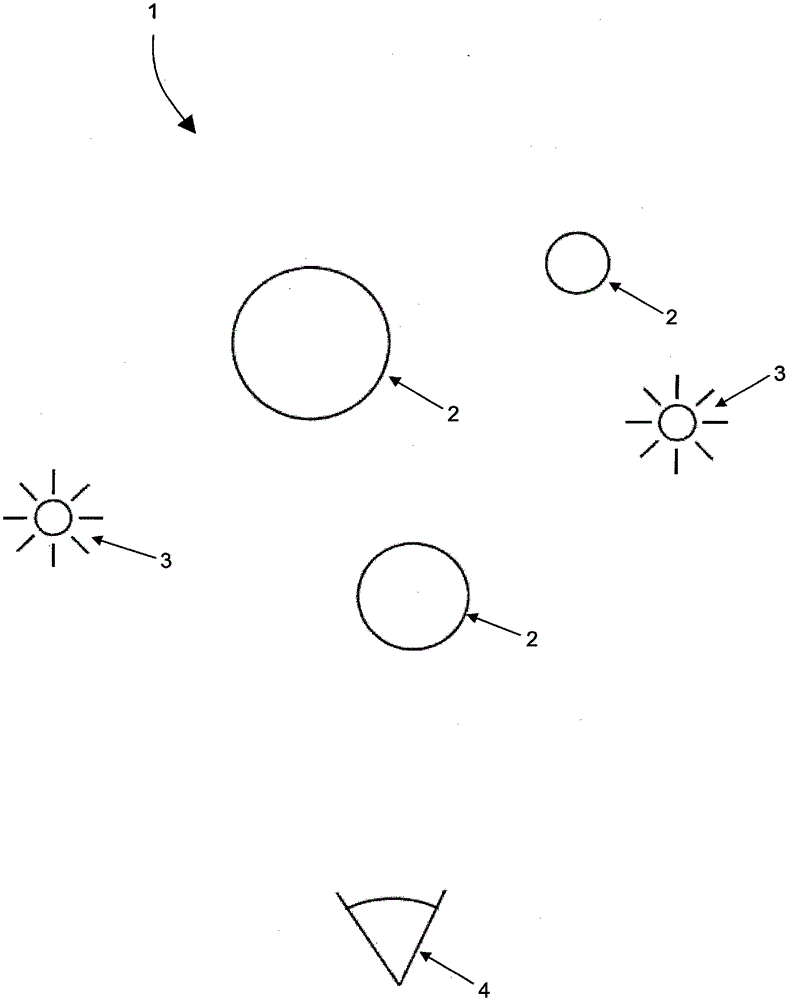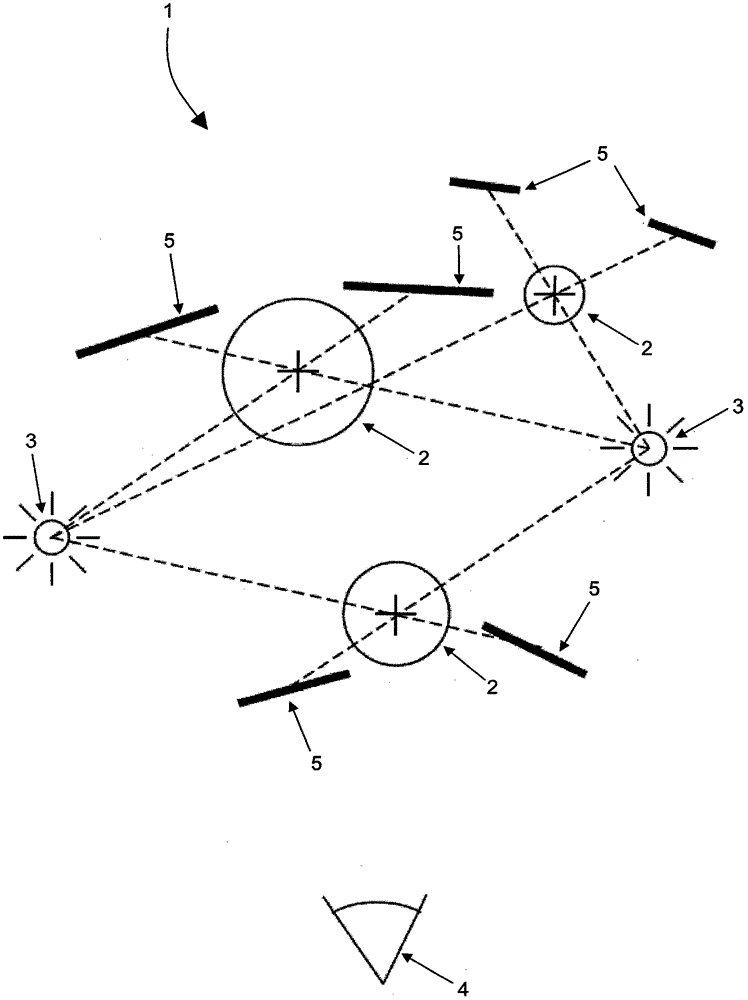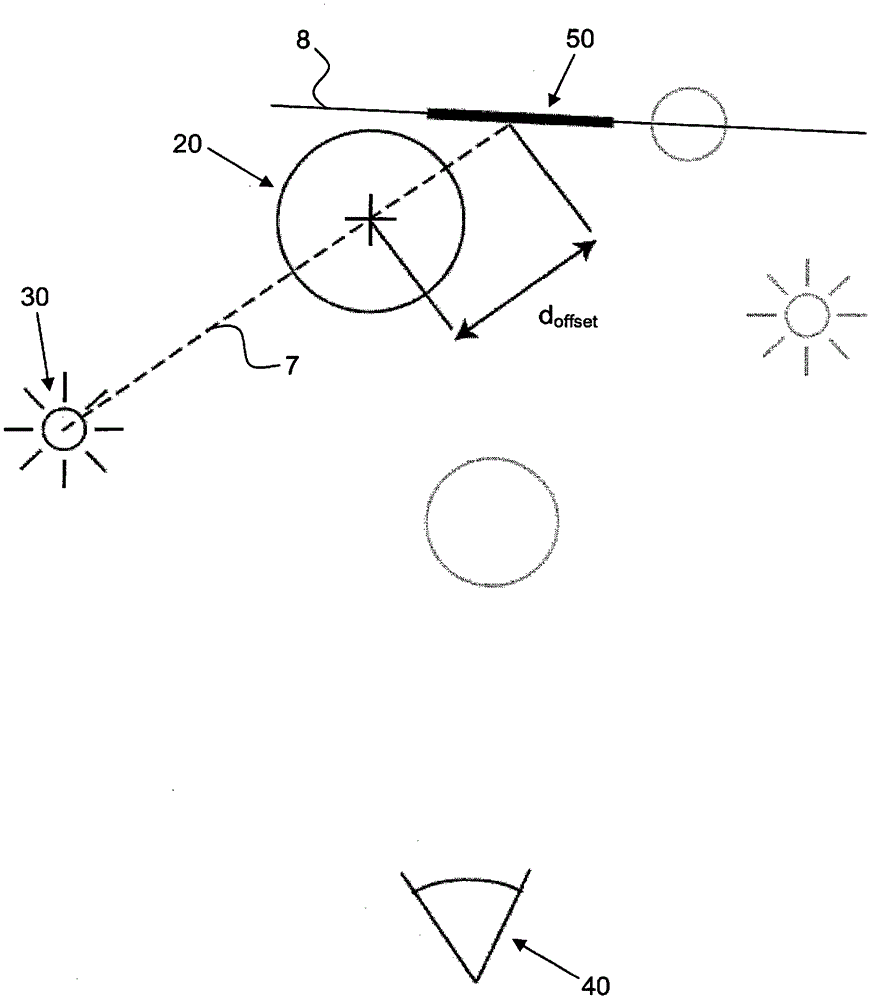Method for adding shadows to objects in computer graphics
A computer and shadow technology, applied in 3D image processing, calculation, image generation, etc., can solve the problems of slow image rendering, unrealistic images, high computing power, etc., to achieve realistic images and increase the effect of spatial perception
- Summary
- Abstract
- Description
- Claims
- Application Information
AI Technical Summary
Problems solved by technology
Method used
Image
Examples
Embodiment Construction
[0038] figure 1 A scene 1 is shown comprising original objects 2 and light sources 3 each having a three-dimensional (3D) position. Observer 4 observes scene 1 from a viewpoint that is also assigned a 3D position. In the field of computer graphics, the observer (i.e., the 3D position at which the scene is viewed in the rendered image) is sometimes considered part of the scene, and sometimes not. In the following, Observer 4 will not be considered part of Scene 1. Instead, throughout this document a scene is defined as a virtual 3D space comprising at least one original object 2 and at least one light source 3 . Scene 1 is fully or partially generated by a computer running a computer program that generates a 3D scene.
[0039] Primitive object 2 can be any type of object. For example, the original object 2 may be a 3D model depicting any real or imaginary object (eg dog, person, spaceship, celestial body, etc.). The original object 2 may also be a 2D object depicting any r...
PUM
 Login to View More
Login to View More Abstract
Description
Claims
Application Information
 Login to View More
Login to View More - R&D
- Intellectual Property
- Life Sciences
- Materials
- Tech Scout
- Unparalleled Data Quality
- Higher Quality Content
- 60% Fewer Hallucinations
Browse by: Latest US Patents, China's latest patents, Technical Efficacy Thesaurus, Application Domain, Technology Topic, Popular Technical Reports.
© 2025 PatSnap. All rights reserved.Legal|Privacy policy|Modern Slavery Act Transparency Statement|Sitemap|About US| Contact US: help@patsnap.com



